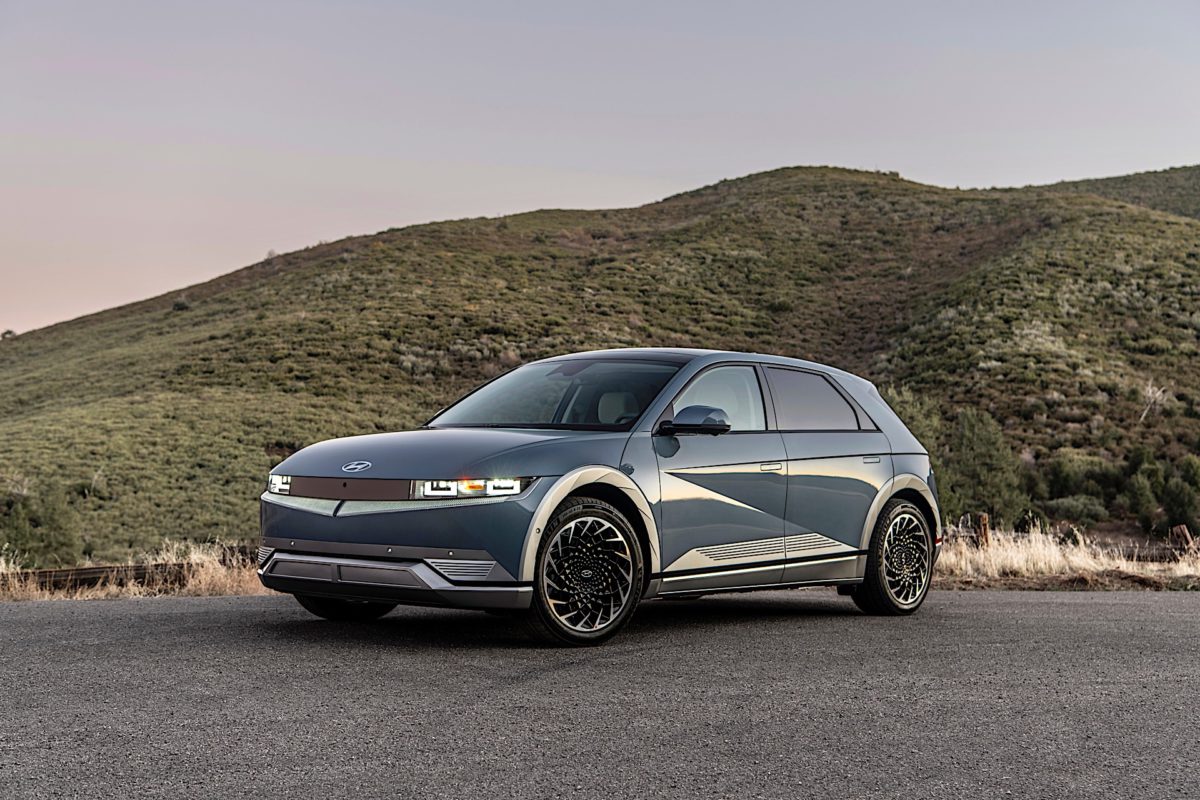One thing you’ll notice if you are out seeing Spider-Man: No Way Home is that Hyundai’s Ioniq 5 is Happy’s car in the movie. The retro-futuristic electric car feels right at home with Tony Stark’s tech, Doctor Strange’s magic, and all of the other craziness that comes with the Marvel Cinematic Universe.
But Ioniq 5 is more than just a sci-fi-looking crossover powered by electricity. It’s one of the best EVs that I’ve driven, and will likely be one of the most talked-about EVs of 2022, just like Spider-Man will probably be talked about for a long time into the new year.
In what could only be explained by a disruption in the multiverse, the Ioniq 5 looks almost exactly like the concept car in which it was based. Hundreds of LED pixels adorn both the front and the rear of the car, giving it an 8-bit, 1980s Nintendo vibe. Everything is squared off with the lighting. It’s so very retro, but not like retro in the actual 1980s.
The overall design has creases and angles that add to the appearance and help it cut through the air. The wheels, a saucer-style face, look more like they’ll cut through the asphalt than drive on top of it.
It’s a car that gets attention. During my first drive experience in and around San Diego, people gave it a second look. A kid nearly crashed his bicycle when his jaw hit the floor.
Not everyone will like the look, but bold styling is something that Hyundai was missing for a generation, and only now are rediscovering it with vehicles like the Santa Cruz and Tucson. The Ioniq 5 simply takes that to the next level.
The Ioniq 5 is powered by either a 58 kWh battery pack or a 77.5 kWh unit. You can get the Ioniq 5 in either rear-wheel or all-wheel drive.
The base car makes 168 horsepower and gets 220 miles of range. The rest of the rear-drive cars make 225 horsepower and get 303 miles of range. The all-wheel drive cars make 320 horsepower and have 256 miles of range.
All-wheel drive cars come with a heat pump attached to the climate control system and a battery heater to help with winter performance.
All Ioniq 5s come with Android Auto and Apple Car Play, Hyundai’s advanced driver assistance functions including Highway Drive Assist, and the ability to fast charge at well over 200 kWs. Hyundai claims a 10% to 80% charge in just 18 minutes.
Upgraded cars include a newer, fancier version of Highway Drive Assist, that includes the ability to perform lane changes automatically. The driver just has to signal the intent to change lanes and the car does the rest.
Additionally, an augmented reality heads up display helps in making the right turns at a complicated junction.
The driver’s seat will even recline back and a leg rest pops out from the bottom of the seat so that you can get your relax on while the car is charging.
The Ioniq 5 drives quiet and smooth. The suspension is on the softer side, even for an electric, which makes highway cruising a breeze as it handles bumps in the road with ease. It gets up to highway speeds quickly, and instant electric torque helps in overtaking. It feels quite speedy, and is enough for most people.
On a spirited back road drive, the Ioniq 5 drives well enough but it doesn’t hide its weight the way some sportier cars do. That’s fine, though, because most owners won’t be driving it like a sports car.
Owners will get 2 years free of 30 minute Electrify America charging. Since it’ll hit 80% in 18 minutes or less, you should never actually need to pay for DC fast charging at an EA station. Hyundai set up a demo for us near the Mexico border where we saw the indicator read 235 kW for a bit. It charges as quick or quicker than any other reasonably inexpensive EV you can buy.
The only EVs I’ve driven that peak higher is the dual motor Tesla Model 3 and Model Y and the Porsche Taycan. But the reality is it’s charging average over time, and we look forward to more extensively evaluating charging when we get one in for a longer review.
Because the wheelbase is longer than the Palisade, there’s plenty of room in both the front and rear seats for passengers. The cargo storage area is adequate, but not class leading. There is a front trunk, but it’s really only big enough to store the included charging cable.
The Ioniq 5 is the value leader, starting at $40,925 with destination. The car is still eligible for the $7,500 federal tax incentive, plus anything that might be available at the state or local level.
If you’re an option box checker and get a car equipped like our test car, you’ll top out at $55,725. That’s cheaper than the starting price of a Tesla Model Y.
Cars will be hitting dealerships quite soon, though they’ll only be available in ZEV states in the beginning, plus a few markets where EVs sell quite well — like Texas. Though as the company works through supply chain issues they hope to eventually roll it out to even more States.
The Hyundai Ioniq 5 is nearly everything I want in an EV. It has usable range in both hot and cold weather. It can charge quickly when I do need to recharge. It has state-of-the-art tech features and intelligent cabin. And to my eyes, it looks awesome.
I expect these to be a strong seller.
